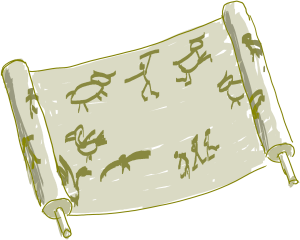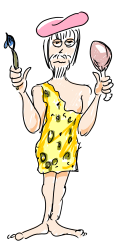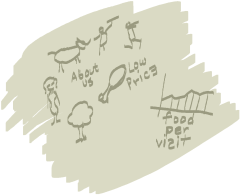6 Evolutionary Phases Of The Online Marketer
We online marketers can get a little full of ourselves. Those of us who strive to educate others about our craft can get preachy about the “right way” to bring traffic to websites and optimize that traffic for conversions. However, like those we are educating, we ourselves have evolved (and are still evolving) throughout our […]
We online marketers can get a little full of ourselves.
Those of us who strive to educate others about our craft can get preachy about the “right way” to bring traffic to websites and optimize that traffic for conversions.
However, like those we are educating, we ourselves have evolved (and are still evolving) throughout our online marketing journey. What works for us now only works because we endured this evolutionary process and were able to learn from experience. We often forget those years we spent growing — we want our readers to simply jump to a new level after reading our brilliant articles.
It doesn’t work that way.
I’d like to acknowledge, dear reader, your place within your own evolutionary journey in online marketing. This isn’t an evolution from dumber to smarter, but rather a journey from your situation today to your situation tomorrow.
Find your evolutionary phase below, and I’ll provide some of the resources that were instrumental to me when I was in that stage of my journey.
Webis Erectus
Having drawn some attractive drawings on his cave, Webis Erectus realizes that more of his friends have been hanging around since the artwork went up. These friends are often carrying food and drink, which they are compelled to share while visiting. For Webis Erectus, this beats hunting and gathering.
In this stage, we decide that our website can be more than just a digital brochure, and we begin to do things differently. Our first taste of selling or generating leads will catapult us into this first evolutionary leap.
Resources: For the Webis Erectus, I wrote a book that I can’t recommend highly enough. Additionally, the folks at the Content Marketing Institute produce a great deal of content that is of great value to evolving Webis Erectus.
Keyanderthal
Wanting more people to come to his cave, the Keyanderthal hangs several signs outside with keywords scrawled on them. He soon finds more people visiting the cave, including many who don’t even know what words are, but showed up out of curiosity.
In this phase, the online marketer focuses on ways to get more traffic to the website. We sometimes get stuck in our Keyanderthal phase, failing to invest in our site as we seek more and more visitors. And why not? With new ad formats, retargeting, social advertising and more, there is plenty to do in our Keyanderthal phase.
Resources: Search Engine Land is dedicated to the Keyanderthal, and many in this stage find its content incredibly useful.
Analytopithecus
Concerned that many visitors are leaving before sharing their food, Analytopithecus begins collecting data on the cave visitors, noting which paintings they like and the amount of food and drink they came with. He attempts to present the data to his wife, but only succeeds in curing her insomnia.
Analytopithecus has begun to ask more questions about his visitors. In this stage, the online marketer begins to interpret analytics data to learn more about how visitors like to use the site and where they get caught up and leave.
Resources: A variety of Web analytics software and click-tracking heatmap packages exist for us to choose from. Most of you are already familiar with Google Analytics from your experience with AdWords.
HiPPO Sapiens

While many see this as a sudden stalling in the evolutionary record, the Highest Paid Person’s Opinion, or HiPPO, cannot be ignored. They have to answer to others in the organization, and this often means that “how it looks” is more important than “how it performs.” At best, they are willing to consider the analytics data you’ve begun to collect. However, their ability to communicate that up the chain is often a stumbling block.
This is where you get good at presenting the data you are collecting. Being able to wade through your analytics and pull out the one chart, graph or conclusion is key to helping the HiPPO understand the value of data-driven decision-making.
Resources: For me, Avinash Kaushik had been the go-to source for turning data into presentable insights. His blog, Occam’s Razor, and his books are a great resource for your HiPPO Sapiens phase. I also like Nancy Duarte’s book Resonate for presenting data.
CRO-Magnon
As other cave owners begin putting signs outside their caves, CRO-Magnon sees an unexpected drop in visitors – and food shared. He purchases another cave, almost identical to the one he lives in, and begins testing which artwork makes visitors share more food. When asked by his neighbors how he can afford more than one cave, he answers, “I can afford two caves because I have two caves.”
CRO-Magnon man and his family begin putting on a lot of weight.
With the frontal lobe of his brain having been fully developed, the CRO-Magnon is poised to invest the time and effort required to understand his visitors’ behaviors and to test assumptions about what makes them take action. It is a golden age for CRO-Magnon man, as many inexpensive tools are available for testing content on our sites.
Resources: Books and blogs from Tim Ash, Chris Goward, and Bryan Eisenberg provide great resources for the CRO-Magnon.
Techno Sapiens

The promise of automatic optimization of our sites is still in its infancy, but holds the promise of highly tailored websites.
Resources: Companies like Monetate and Optimizely are seeking to discover what works for different segments of our audience and to deliver exactly the content, products and calls to action that will make them feel the site was created just for them.
Coming Full Circle
Having embarked on this journey myself, I must admit that I have developed a new belief on the basics of communication. Despite our technology, our visitors are human — and humans respond to the human voice. Storytelling, metaphors, humor and emotion will always be the foundation on which we build our online experiences.
Resources: In this case, I recommend reading good fiction of your choice for inspiration.
What resources have you found helpful on your journey? Tell us the state and the resource in the comments.
Opinions expressed in this article are those of the guest author and not necessarily Search Engine Land. Staff authors are listed here.
Related stories



